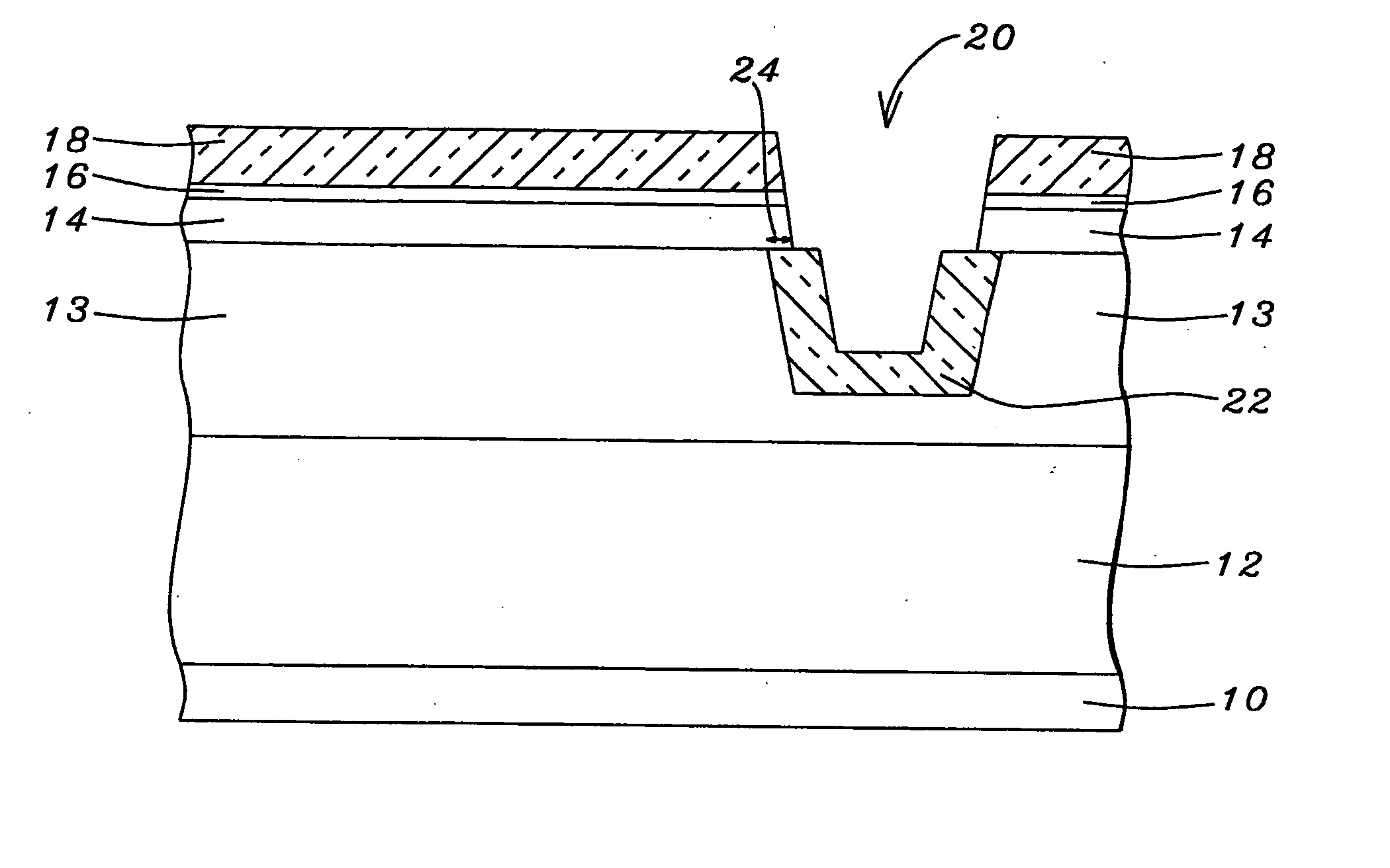Method to reduce junction leakage current in strained silicon on silicon-germanium devices
a technology of strained silicon and junction leakage current, which is applied in the direction of semiconductor devices, semiconductor/solid-state device details, electrical apparatus, etc., can solve the problems of strained silicon, unviable further developments in conventional silicon technology, and inability to meet the needs of the future, so as to reduce the junction area
- Summary
- Abstract
- Description
- Claims
- Application Information
AI Technical Summary
Problems solved by technology
Method used
Image
Examples
Embodiment Construction
[0023] Strained-silicon MOSFETs are formed on a composite substrate, shown in FIG. 1, consisting of a bulk silicon substrate 10, graded composition silicon germanium buffer layer 12, uniform composition SiGe buffer layer 13, and a thin layer of strained silicon layer 14 hetero-epitaxially. deposited over SiGe layer. The deposition processes known in prior art are used for depositing said SiGe and thin Si layers. Said graded composition SiGe buffer layer, p-type in one embodiment, is approximately about 1 μm-4 μm thick, uniform composition buffer SiGe layer 13 is approximately about 0.5 μm-2 μm thick, and said top silicon layer 14 is approximately 50-400° A thick. In the graded SiGe buffer layer, Ge composition is graded in that there is a higher concentration of Germanium (Ge) atoms near the top. Maximum germanium concentration in the graded layer can vary from 0-40%. Said uniform composition SiGe buffer layer (composition is the same as the maximum value of the graded layer) being ...
PUM
| Property | Measurement | Unit |
|---|---|---|
| thickness | aaaaa | aaaaa |
| thickness | aaaaa | aaaaa |
| thickness | aaaaa | aaaaa |
Abstract
Description
Claims
Application Information
 Login to view more
Login to view more - R&D Engineer
- R&D Manager
- IP Professional
- Industry Leading Data Capabilities
- Powerful AI technology
- Patent DNA Extraction
Browse by: Latest US Patents, China's latest patents, Technical Efficacy Thesaurus, Application Domain, Technology Topic.
© 2024 PatSnap. All rights reserved.Legal|Privacy policy|Modern Slavery Act Transparency Statement|Sitemap



